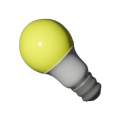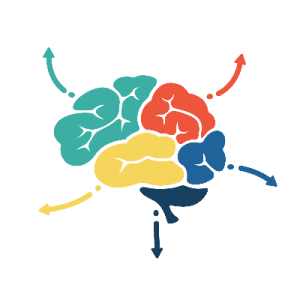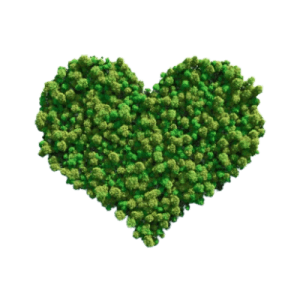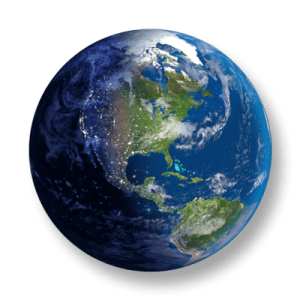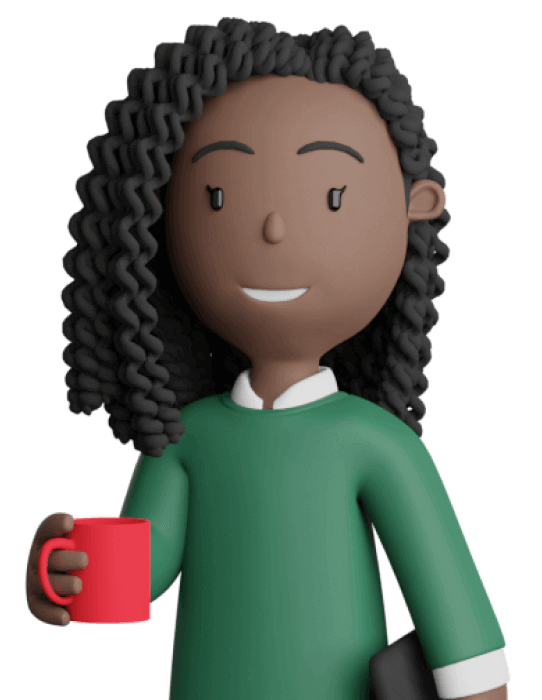Pollinator poster
Print a poster of B.C. pollinators to post in the classroom. Challenge your students to spot them outside and pledge to protect them.
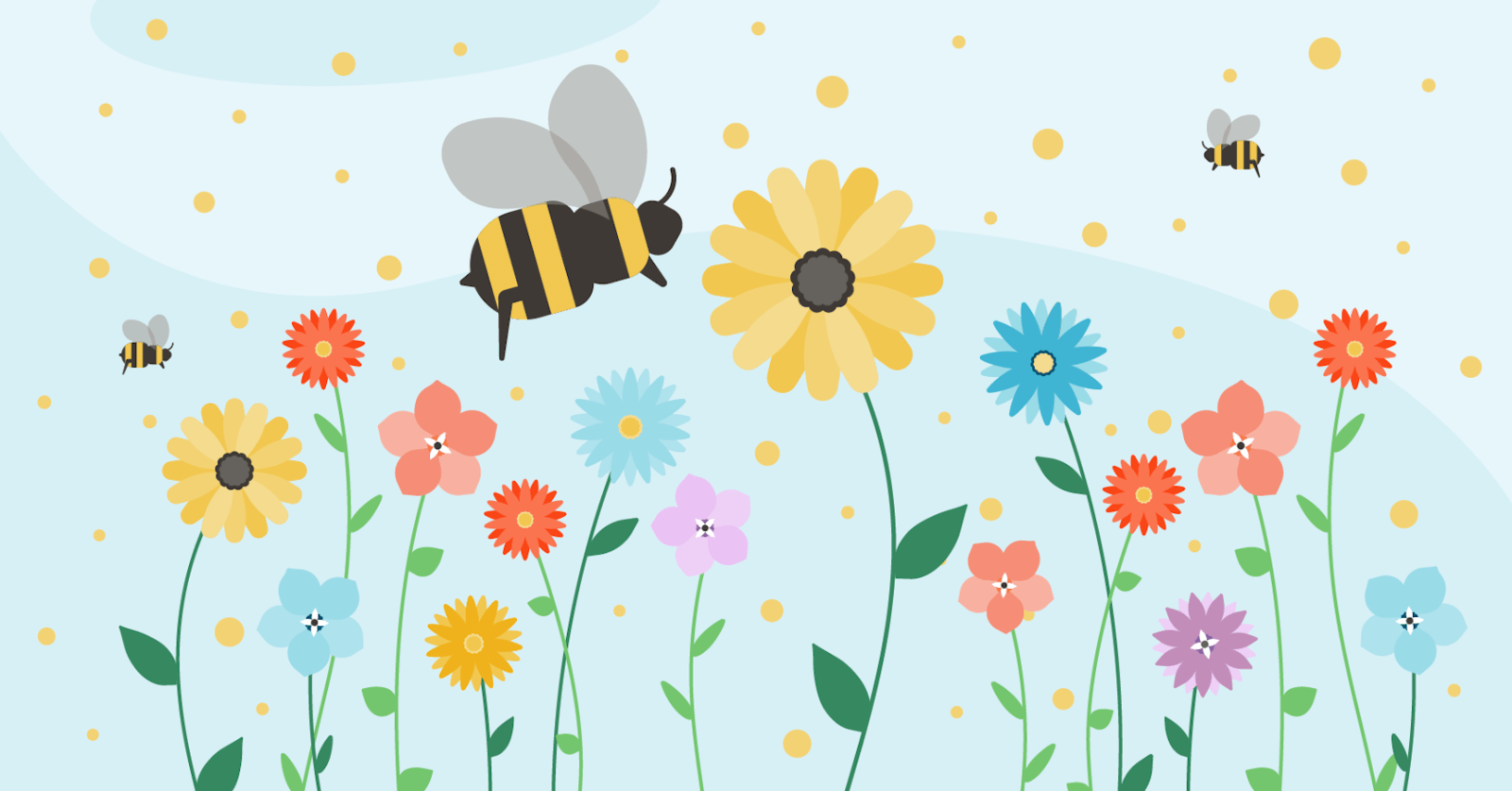
Overview
Download and print our Pollinator Poster to hang in the classroom. In this activity we provide lots of information to share with your classroom, resources you may find useful during Pollinator Week and beyond, and discussion starters.
Instructions
What you'll need
- Print the Pollinator Poster in colour on 11 x 17 inch (tabloid) paper
- Print the Pollinator Pledge, one copy per student
- Pencils and colouring supplies for each Pledge
The Pollinator Poster is a resource for your classroom which can also be used as a flexible activity. You may choose to just to use the poster itself, but we recommend taking the opportunity to form a discussion about pollinators, inspire protective actions, and encourage your students to watch for these pollinators regularly throughout spring and summer.
You may choose to dedicate one session or day to discussing pollinators, or you can end each school day for a week by reviewing the poster and encouraging students to identify pollinators when they leave the classroom.
Poster
- Download the Pollinator Poster PDF and print it in colour on 11 x 17 inch (tabloid) size paper.
- Choose a prominent place to hang the poster in the classroom.
- The best location is near and outdoor exit so that students can look at the poster on their way outside, where they might see pollinators.
- You may want to post the poster on the first day of Pollinator Week, or at the start of spring.
- Announce to the classroom that you have put up a Pollinator Poster, which features nine of the most important pollinators in B.C.: Bees (three types), wasps, butterflies, moths, beetles, hummingbirds, and bats.
- Make sure they know that there are others types of pollinators as well. There are many types of bees in B.C., and another important pollinator not included on the poster is flies. The poster focuses on pollinators which we can support the most.
- Make sure they know that there are others types of pollinators as well. There are many types of bees in B.C., and another important pollinator not included on the poster is flies. The poster focuses on pollinators which we can support the most.
- Ask the class if they know about pollination, and why it matters.
- Share these important facts about pollination:
- Many plants create a fine powder called pollen
- This pollen goes to other plants to fertilize them and allow them to create new plants
- For older students, you might explain that this is their version of reproduction; pollen grains contain the male gametes which must reach the female plants to complete the process.
- Pollen can be spread by the wind and by water, but it also relies on pollinators to spread.
- Pollinators are animals (including insects) that visit or pass by flowering plants and carry their pollen over to other plants, making it easier for them to reproduce. Fuzziness often helps pollen stick better to the pollinator.
- Bees are the most famous pollinator. In fact, many farmers will hire beekeepers to bring their bee colonies to their crop to pollinate and allow it to grow.
- Pollination is important for many of the plants around us and the crops we rely on, including apples, blueberries, pumpkins, raspberries, and many more.
- Ask some interactive questions where students can raise their hand or share their experiences:
- Which of these pollinators have you seen before?
- Has your home been visited by any of these pollinators?
- Which of them do you like the most, and why?
- Let the class know that you will revisit the poster soon, so they should look for pollinators outside and share which ones they saw next time.
Daily poster check-in (optional)
For one week, during pollinator week or any time in spring, consider holding a brief daily discussion about the pollinators at the end of each day. This is a fun way to end the day, and inspires students to think about these pollinators as they leave the classroom.
Pollinator pledges (Grades 2-4)
This activity comes with a Pollinator Pledge to encourage students to commit to monitoring and protecting pollinators in their neighborhoods.
- Print out one copy of the Pollinator Pledge PDF for every student. There are several ways to approach this in the classroom:
- When you introduce the Pollinator Poster, hand out the pledge for students to fill out before the day ends or at home.
- If you have a day or session dedicated to pollinators, finish by reviewing the poster and having students fill out the pledge.
- If you do a daily pollinator check-in for the week, finish the last check-in by having all students write their pledge.
- Every student will fill out the pledge with:
- The pollinator they pledge to protect this summer;
- A sketch and a brief description of the pollinator;
- How they are going to protect the pollinator.
- Share your pledges:
- Ask students to each share their pledge with the class.
- (optional) Put the completed pledges on the wall of the classroom.
- (optional) Ask students to take their pledge home and share it with a parent or guardian so that they can work together to protect their favorite pollinator or build safe spaces for them.
Pollinator project proposal (Grades 5-7)
After learning about pollinators from the poster and spending time looking for them outside, older kids can learn how to turn their observations and pledges into actions.
- Revisit your pollinator discussion and observations. Ask students if they can name some of our most important pollinators, and which they've seen outside.
- Discuss what pollinators need to thrive, and what threats they face.
- Many of them need flowers to visit, especially the native species they expect to find.
- They need places to nest and rest, and they need food—which includes the pollen and nectar from flowers.
- They face many disruptions from modern development, including loss of habitats, pollution, and pesticides.
- See Teaching notes for more information and resources.
- Discuss: How do you turn problems into actions? Environmental issues can be daunting and difficult to approach, but it starts with small steps.
- Learn more about something you want to protect, like bees and butterflies.
- Research the problems and threats they face.
- Find out what organization exist that already support your cause. Check the website to see what actions are most helpful.
- Plan out your own actions:
- What materials do you need to build a habitat or feeder? Where can you find instructions?
- Where could you put a garden or home for pollinators?
- Who would you write a letter to about your cause? What would you say to them?
- Work together! Most conservation actions are more powerful when you work together with someone else. Ask for help, find someone else who shares your passions, or join an existing group.
- Introduce the project: Students will create a proposal for a conservation project to support a pollinator of their choice. They'll plan out the steps, information, materials, and support needed to make the project happen.
- Project can be assigned individually or in groups.
- Students can propose something small that they could put into action, or something more ambitious. The important thing is to come up with a plan and outline the steps involved.
- Consider providing time in class to work on the project, so that students can lean on your support and share information with each other.
- Students will likely need internet access for research. Alternatively, teacher can print resources and students can look through them for inspiration and take notes.
- When the proposals are done, give students a chance to share them with the class. Encourage students to follow through on their proposal in real life if they can.
Here are some project ideas students could use along with examples of some questions they can address in their proposal:
- Pollinator garden — Plan a garden of native flowers to plant in your neighborhood. Where could a garden be planted? What plants does your chosen pollinator like best? What tools will you need? What are some good examples of pollinator gardens?
- Pollinator home — How do you build a house for your favorite pollinator? Where can you find instructions and examples? What materials do you need? Where would you put it?
- Pollinator zine — Plan a zine or booklet about protecting your favorite pollinator. What facts do you need to include? Where will you get images for the zine? Who will you get contributions from? How will you print them, and how much will it cost? Where will you distribute it, at school or in the community? Alternatively, student could create a simple zine instead of proposing one.
- Group cleanup — Plan an excursion for a group of people to visit a habitat to clean up garbage and/or remove invasive species. What will the group do? How will you recruit members? How long will you spend? How will you stay safe, and what safety equipment do you need?
The proposal activity is all about taking the first steps toward conservation actions and breaking a project down into manageable steps. Encourage coming up with ideas and doing research rather than achieving a perfect action plan.
Modify or extend this activity
- Pollinator Journal: Journaling is a great way to observe and learn about the natural world. Take the class outside on a sunny day and ask them to journal some of the pollination activity they see such as the flowers that are in bloom and the insects that are visiting them. Revisit the poster and ask which of the Power Pollinators did you see outside? See the Field journaling activity for more
- Host a Pollinator Day: Consider holding a day of lessons and activities all about pollinators, especially during Pollinator Week. This can include lessons, crafts, and outdoor activities such as building a pollinator habitat. See the Teaching notes tab for more resources and information which might be helpful. Kickoff your Pollinator Day by showing the poster to the class to look at the most prolific pollinators in the province.
Curriculum Fit
Core competencies
Communication
- Connect and engage with others
- Acquiring and presenting information
- Determining common purposes
Thinking
- Creating and innovating
- Analyzing and critiquing
- Questioning and investigating
Personal and Social
- Recognizing personal values and choices
- Contributing to community and caring for the environment
Science 2-4
Big Ideas
- Living things have life cycles adapted to their environment (Gr. 2)
- Living things are diverse, can be grouped, and interact in their ecosystems. (Gr. 3)
All living things sense and respond to their environment. (Gr. 4)
Content
- Life cycles of different organisms (Gr. 2)
- Biodiversity in the local environment (Gr. 3)
- Sensing and responding to plants and other animals (Gr. 4)
Curricular Competencies
Questioning and predicting
- Demonstrate a curiosity and sense of wonder about the world (Gr. 2-4)
- Observe objects and events in familiar contexts (Gr. 2-4)
Planning and conducting
- Make and record observation (Gr. 2)
- Make observations about living and non-living things in the local environment (Gr. 3-4)
Processing and analyzing data and information
- Experience and interpret the local environment (Gr. 2-4)
Evaluating
- Compare observations with those of others (Gr. 2)
- Consider some environmental consequences of their actions (Gr. 2-4)
Communicating
- Communicate observations and ideas (Gr. 2-4)
Science 5-7
Content
- Sustainable practices and interconnectedness (Gr. 5)
- Evidence of climate change and the recent impacts of humans (Gr.7)
Curricular Competencies
Questioning and predicting
- Demonstrate a sustained curiosity about a scientific topic or problem of personal interest
- Make observations in familiar or unfamiliar contexts
- Identify questions to answer or problems to solve through scientific inquiry
Planning and conducting
- With support, plan appropriate investigations to answer their questions or solve problems they have identified (Gr. 5-6)
- Collaboratively plan a range of investigation types, including field work and experiments, to answer their questions or solve problems they have identified (Gr. 7)
- Choose appropriate data to collect to answer their questions (Gr. 5-6)
Applying and innovating
- Contribute to care for self, others, and community through personal or collaborative approaches
- Co-operatively design projects
- Transfer and apply learning to new situations
Assessments
- Watch out for engagement when discussing what pollinators students have seen and which they are most excited to find. If a student is not engaging, consider asking them what pollinator they hope to see and checking back with them the next day.
- Use the Pollinator Pledge to track engagement, and encourage students to add more if they haven't written or drawn many details. Students who need more writing support might be able to talk about a pollinator or act it out, and their helper can write what they said into the pledge.
- If you revisit the poster for a daily check-in, ask students to recall details about pollinators you've discussed and assess their engagement and recall of details. Consider reviewing facts to encourage remembering the important details of pollination, like the fact that pollen sticks to fuzzy bees and that many plants don't grow until there is pollination.
Teaching Notes
The Pollinator Poster can be used as a standalone resource, but pollinators are a very important topic worthy of its own lesson or even a whole day of learning, especially during pollinator week. We encourage you to use it as a starting point for a larger conversation.
Read below for:
- Background information about pollination and pollinators
- Threats to pollinators
- Ways to support pollinators
- Helpful tools and resources
- Related BC Hydro initiatives
Background information
Pollen is a powder which contains the male gametes (sperm cells) of flowering plants which fertilize that plant or other plants once they reach the stigma (female organ).
Some plants can self-pollinate when the pollen falls into the stigma, while others require fertilization from a different plant of the same type to reproduce. This pollination is assisted by wind, water, and pollinators.
Pollinators are animals (including insects) which carry pollen from one plant to another. The majority of flowering plants need pollinators, like bees, to reproduce. That means the plants in our neighborhood and the crops we eat rely on them.
In B.C., these are our most important pollinators:
- Bees: Bees are the most famous pollinators because they are easily identifiable and they are very effective. They collect nectar and pollen from flowers, and in the process they carry pollen from one plant to another. Their fuzzy bodies make it easier for pollen to stick to them.
Students are often most familiar with honeybees, which are known for their beehives and colonies. They may not realize there are many other types of bees which live different ways. Bumblebees have big fuzzy bodies which are perfect for pollination, and they build nests in the ground or in hiding spots. Mason bees are more solitary and seek refuge in tight spaces like inside of plants. Let your class know that there are thousands of species of bees that pollinate in different ways.
- Wasps including paper wasps, yellowjackets, and hornets lead a similar life to bees and therefore also pollenate plants. That said, they are not as fuzzy so they don’t carry pollen as effectively. Importantly, they are far more aggressive than most bees, so students should be respectful but wary of these insects.
- Butterflies are another famous pollinator because they are beautiful, colourful, and easy to spot visiting lots of flowers while they collect nectar. They are particularly attracted to colourful flowers which bloom during the day. They benefit from layered gardens where they can find shelter within shrubs or in other hidden spots. It’s not hard to get kids excited about spotting butterflies, but make sure they resist the urge to catch them.
- Moths are almost like nocturnal butterflies, because they also have large wings and flutter between flowering plants but they prefer the sweet-smelling flowers that bloom at night. They tend to be fuzzier which helps them carry lots of pollen with them. They aren’t the same as butterflies and are often less beloved by kids, but encourage your students to see them as important night riders of pollination.
- Beetles also can help pollenate certain plants as they walk over them and collect pollen. This can be especially helpful for larger flowers such as sunflowers. Some of them have wings which allow them to fly between flowers.
- As far as birds go, hummingbirds are the most prolific pollinator because they visit flowers to eat nectar with their long beaks. They enjoy tubular red and orange native flowers, but where flowers can’t be planted they can also benefit from clean and accessible hummingbird feeders. They also benefit from safe sticks and twigs to rest on, especially because their rapidly moving wings use lots of energy.
- Some types of bats eat nectar which means they pollinate flowers along the way, but in B.C. bats mainly just eat insects. Even so, they are very important for a balanced ecosystem by eating insects and balancing populations—which is particularly helpful for bees. Bats find hidden places to roost at night and are active during the day. They mostly avoid humans, but they can sometimes carry rabies so kids should keep a distance from bats.
- Flies aren’t included on the poster but are another important pollinator. Kids likely aren’t excited by flies, in fact they are often considered a pest, but there are thousands of species and some of them have unique relationships with plants as pollinators. Kids may be surprised to find out that some flies look similar to bees, such as the hover fly.
Threats to pollinators
Pollinators are vital to our livelihoods, yet they are heavily impacted by human activity. Pollinator populations are impacted by:
- Agriculture and pesticides
- Unnatural spaces like buildings and concrete
- Expansive lawns and use of non-native plants
- Temperature shifts and extreme weather
- Parasites and pathogens
- Drought
Read more about these threats on Pollinator.org. Learning about how human activity is impacting pollinators can inform your initiatives to support pollinators.
Ideas to support pollinators
- Learn about the pollinators in your region
- Learn about the native plants and other ecosystem features that support your local pollinators
- Grow plants the plants that your local pollinators like most
- Think about natural features you can incorporate in your garden, such as bare ground, tall grass, and layered plants which create safe resting spaces
- Build homes for pollinators to nest or rest in
- Bee houses: Refer to this guide to consider buying or building a bee house.
- Search for local initiatives in your area. Joining a group effort to plant native species, care for natural spaces, remove invasive species,
- Advocate to reduce pesticide use and create more native garden spaces in your area.
- If possible, creating a native plant pollinator garden on the schoolgrounds is a great way to give students a hands-on example of a healthy pollinator garden and how to care for one.
- Inspire students to start their own pollinator gardens. Consider giving them the seeds they need to start one at home. If they don’t have their own yard at home, they may be able to access a community garden or a flower box.
Pollinator resources
Pollinator Partnership Canada is the best source for pollinator information and resources.
Their most helpful resources include:
- Find Your Roots tool: Use this tool to explore the best pollinator plants to use in your garden based on your location, for every region across Canada.
- Pollinator brochures: Download and print brochures to learn more about local pollinators and how to protect them.
- Planting guides: This page offers a detailed guides for planting native species which support pollinators. Brochures are tailored to every region of Canada, including 13 brochures for separate regions of British Columbia.
- Pollinator Enhancement Security Tool (PEST): An interactive tool to help you plan gardens while avoiding pests.
- Seed packets (Vancouver Island): Purchase native seed blends to plant a pollinator garden. This offering is intended for Vancouver Island residents.
- Pollinator garden signs: Printable signs to denote your pollinator garden.
BC Hydro initiatives
- Pollinator corridors under power lines: BC Hydro’s right of ways need to remain clear for safe management of powerlines. However, these spaces are an amazing opportunity to grow native flowering plants and create corridors where pollinators can travel and rest. Proposals can be submitted to make use of this space.
- Community ReGreening Program: Through this program, BC Hydro supports the planting of trees and other vegetation that help enhance ecological networks across the province through grant funding.
- Integrated Vegetation Management Plan: This document outlines how BC Hydro manages vegetation and wildlife around its operations. This includes information about how we protect pollinators and their habitats.
Information sources
- Selecting Plants for Pollinators, a Regional Guide for Farmers, Land Managers, and Gardeners In the Lower Mainland – The Pollinator Partnership, 2017.
- Common Pollinators of British Columbia: A Visual Identification Guide (2nd edition) – Border Free Bees and the Environmental Youth Alliance, 2017.
- Pollinator Partnership Canada website:
Change notes
- August 2025: The Pollinator Project Proposal section was added along with curriculum fit notes for Grades 5-7.




